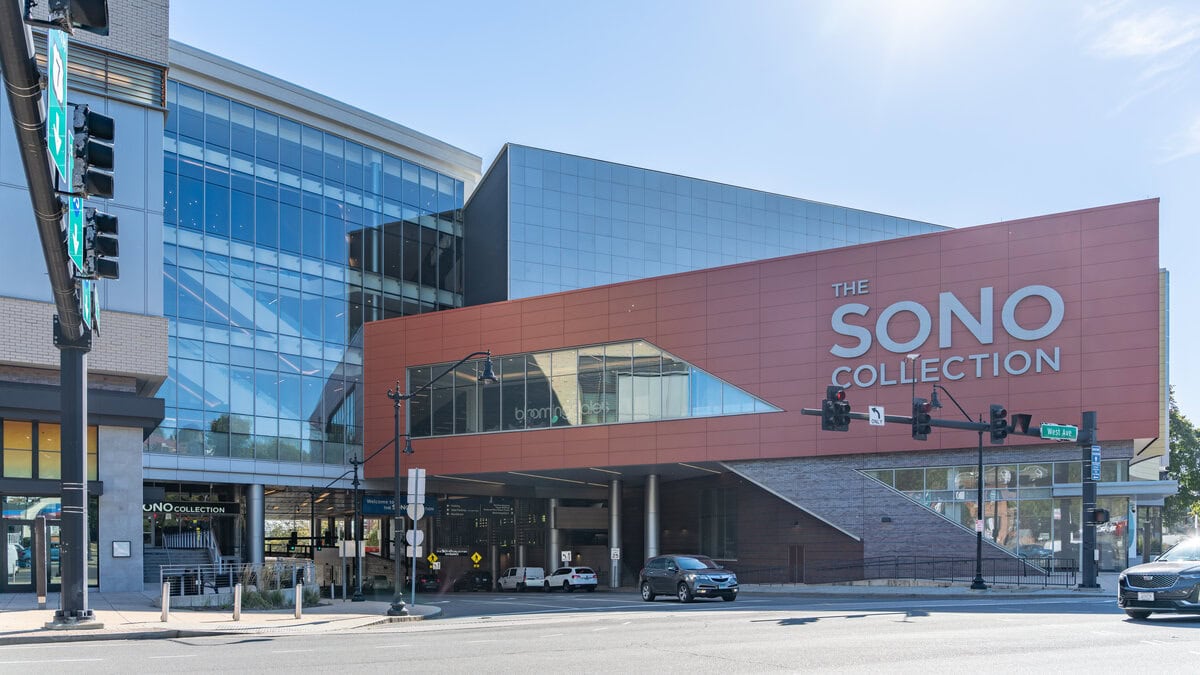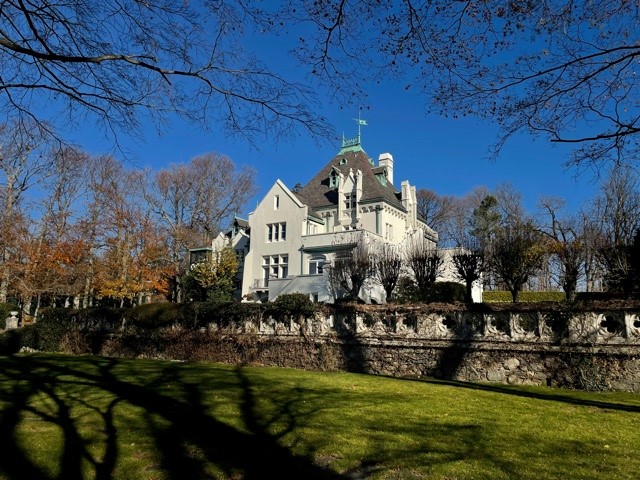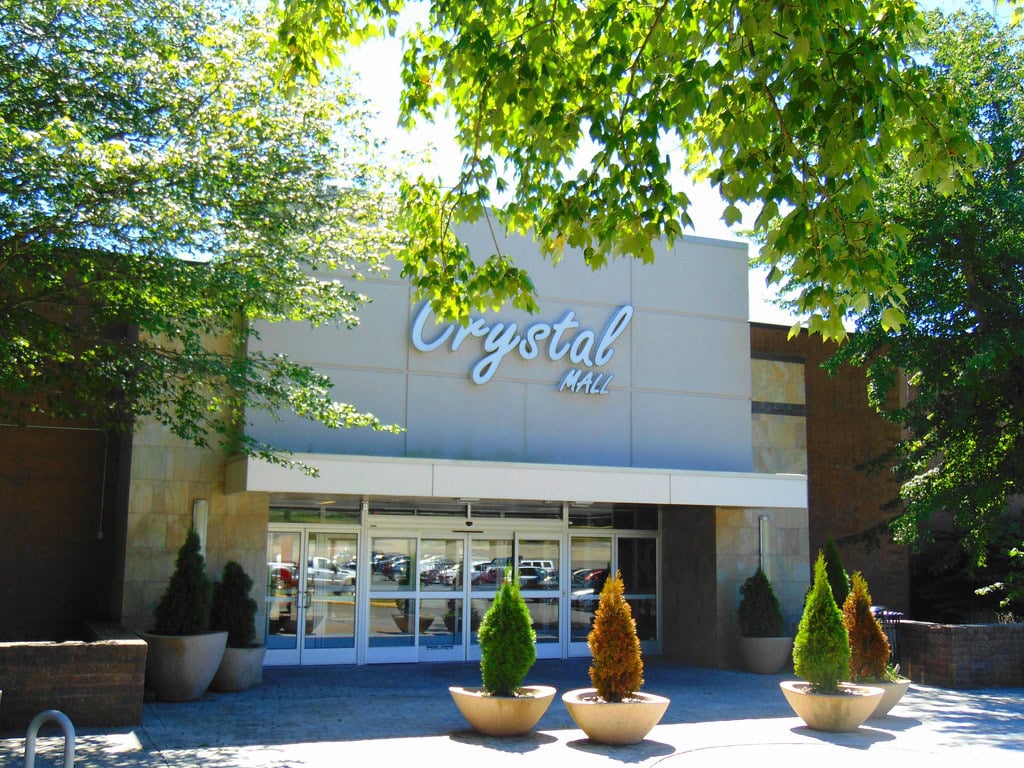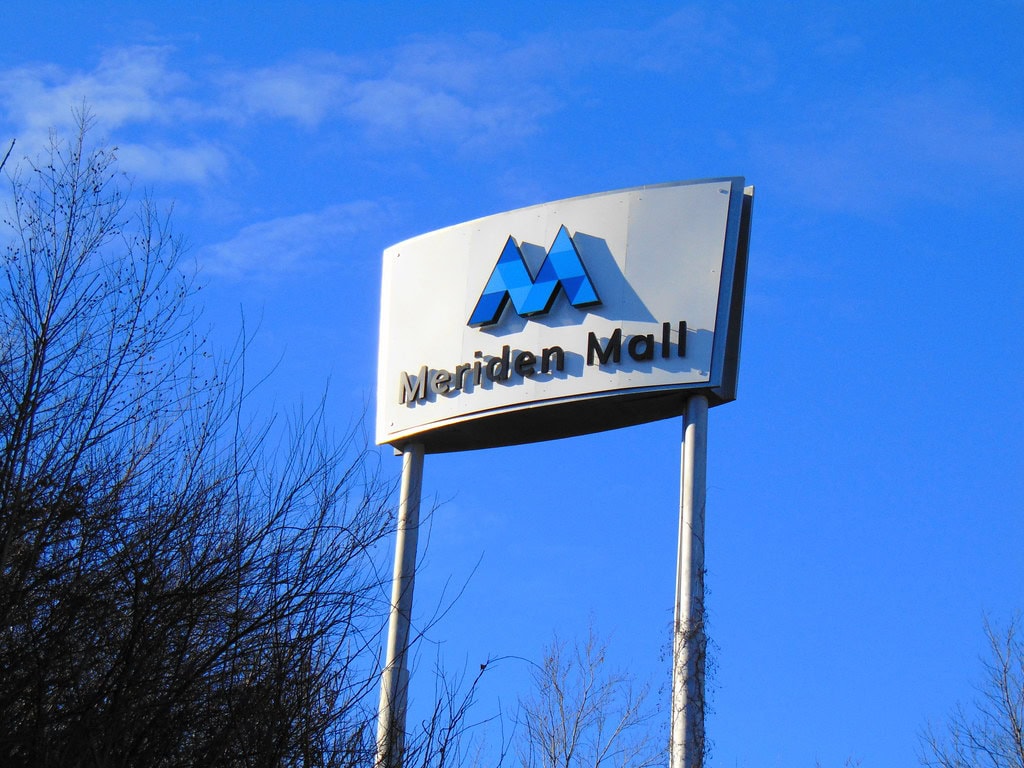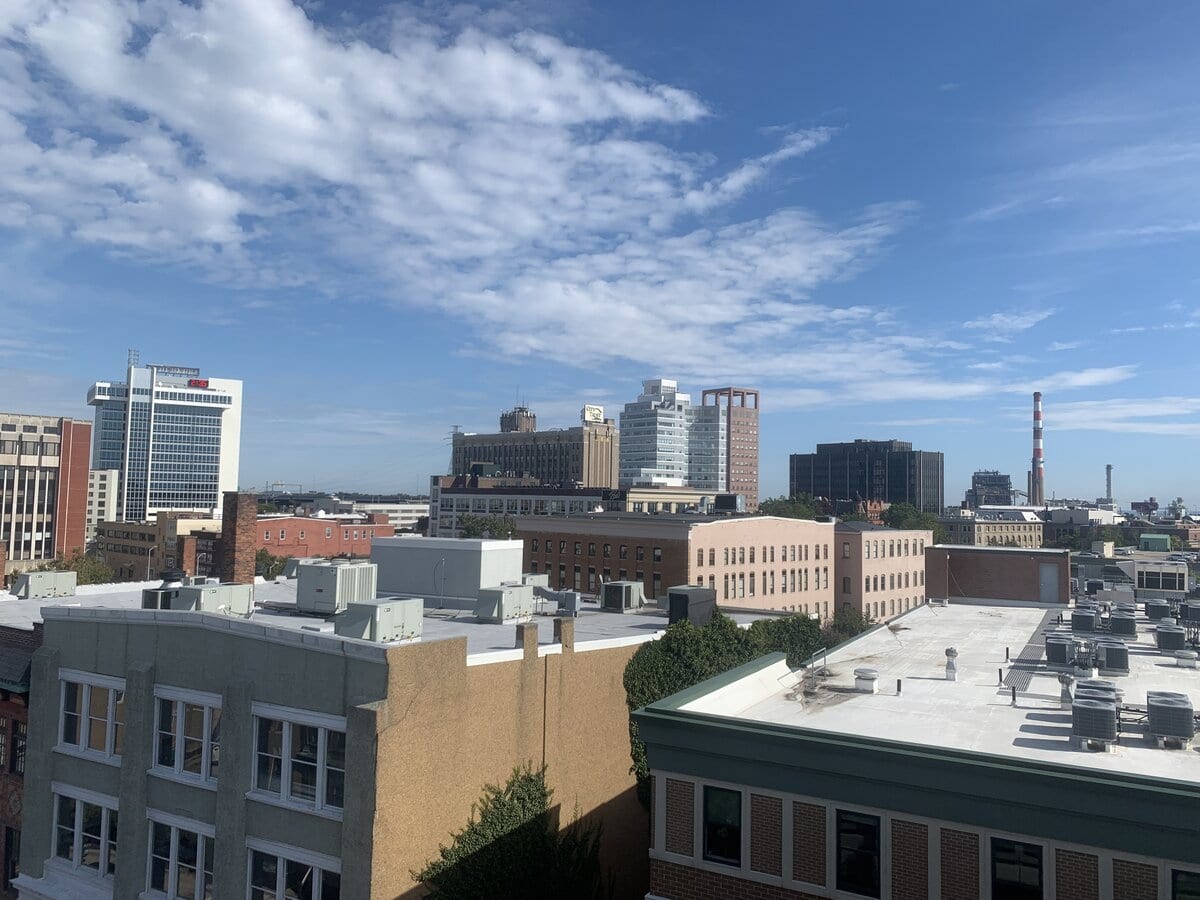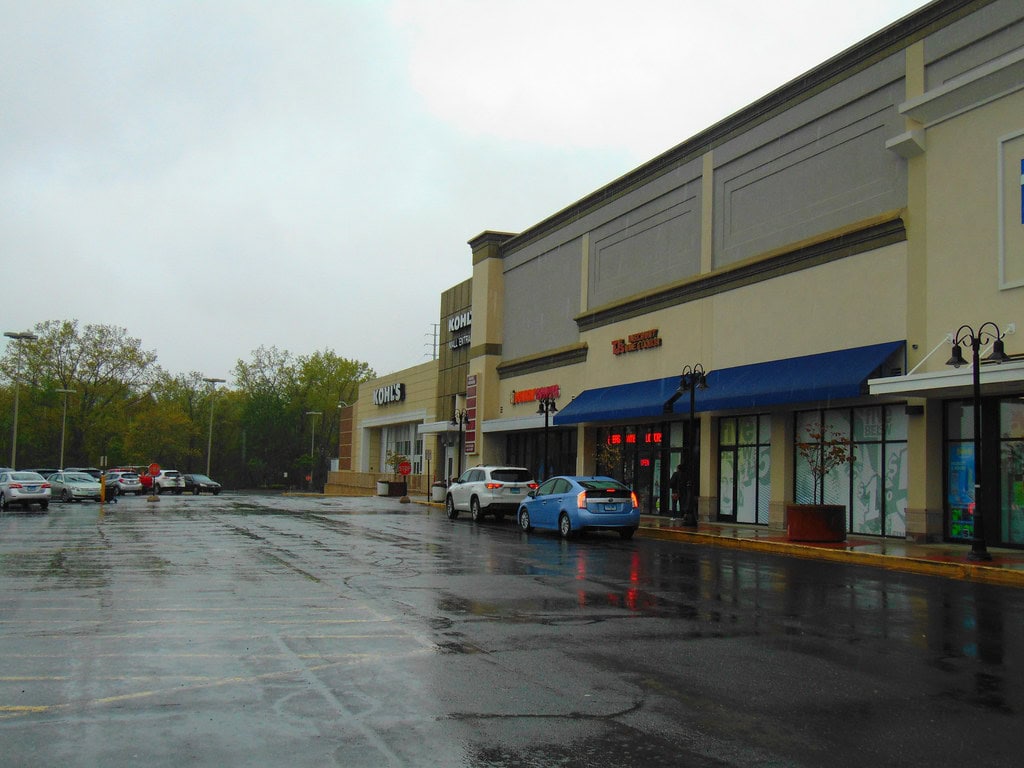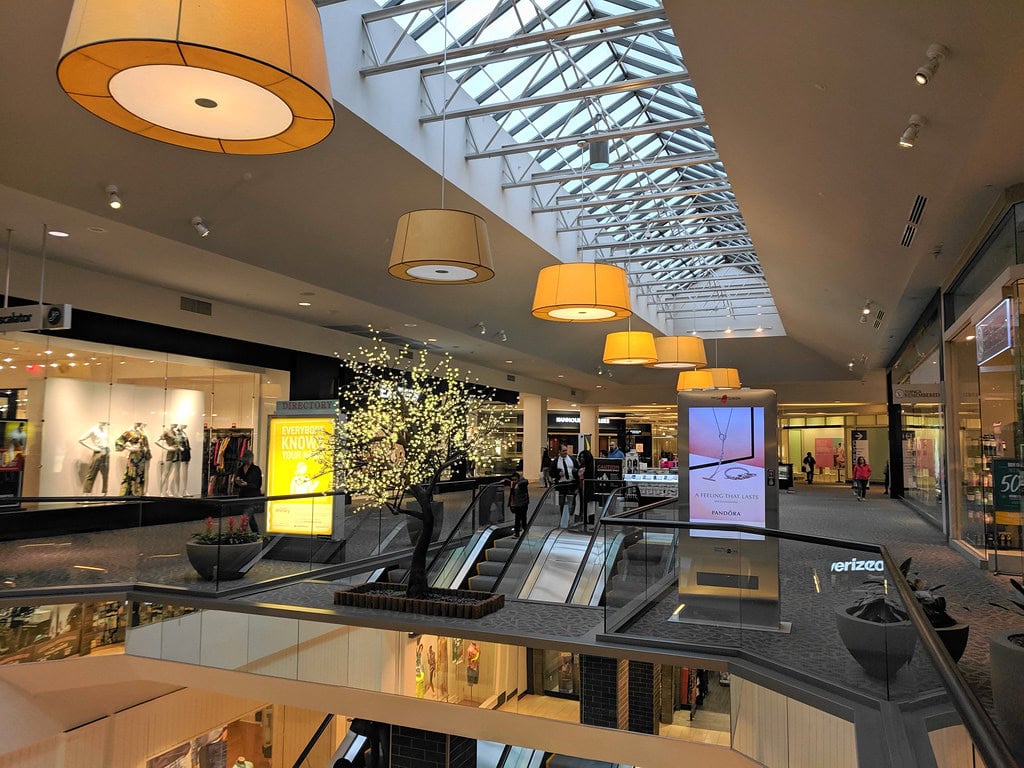Westfarms: Retail on the Town Line
Westfarms is a regional shopping mall located between West Hartford and Farmington in central Connecticut.
It covers over 1.2 million square feet, with large parking areas and several entrances leading to its two floors.
The mall features about 140 to 150 stores and restaurants, anchored by Nordstrom, Macy's, JCPenney, and Jordan's Furniture. Shoppers can find everything from luxury brands and national chains to newer specialty shops and sit-down restaurants.
Westfarms opened in the 1970s to give people another choice besides older downtown shopping areas and outdoor shopping centers.
Over the years, it got bigger, changed its main stores, improved its main areas, and added art, places to eat, and things to do for fun.
While many other malls have closed or lost stores, Westfarms is still almost full and remains a busy place that keeps up with new ways of shopping.
Westfarms rises from the Corbin Homestead
Before it was a mall with Tiffany blue bags and LED tunnels, Westfarms was literal farmland, the Corbin Homestead, on a patch of earth 7 miles southwest of downtown Hartford, Connecticut.
In the mid-1960s, two landowners, Joseph Vetrano and Richard Sheehan, looked at those fields and saw not cows but cars, and perhaps a JCPenney.
Their parcel happened to sit on the border of West Hartford and Farmington, which made the naming committee's work mercifully easy.
By 1972, the idea caught the interest of Taubman Centers from Michigan, a company that built shopping malls. The driving range that had taken over the farmland was soon replaced by building plans and construction.
Westfarms would take up 111 acres and, at a time when enclosed regional malls were still relatively new in Connecticut, was planned as a fully indoor shopping center, like a Main Street inside, with heat and air conditioning.
The early plans were big. The finished mall would have about 869,000 square feet to rent out and three large department stores.
For people who used to drive downtown to shop in the often gray and rainy New England weather, this was like shelter from the weather, with escalators and shiny floors.

Artful courts and the first expansion era
When Westfarms finally opened its doors in 1974, it did so in stages, like a Broadway show working out the lighting.
Sage-Allen, a two-level, 83,200-square-foot department store, opened on August 26. A 191,400-square-foot JCPenney and a three-level, 208,800-square-foot G. Fox followed on September 3.
The mall-wide dedication came on October 14, 1974, when 31 stores turned on their lights at once, and Connecticut officially had its new shopping mall.
The mayors of West Hartford, Farmington, Newington, and New Britain processed through the concourses while the Deep River Fife & Drum Corps and the Serendipity Singers provided a soundtrack that suggested both colonial heritage and hootenanny optimism.
United Artists and Taubman Theatres opened a triplex that same day, "Movies 1-2-3," each auditorium with 400 seats showing, somewhat improbably together, "The Abdication," "The Mad Adventures of Rabbi Jacob," and "Gone With the Wind."
By the end of year one, Westfarms had grown to 65 stores and restaurants. Herman's World of Sporting Goods, Singer Sewing Center, B. Dalton, Ormond Shop, Michael's Jewelry, and Burger King rounded out the cast.
JCPenney and Michael's Jewelers, remarkably, would still be there half a century later, stubborn survivors in a business designed around churn.
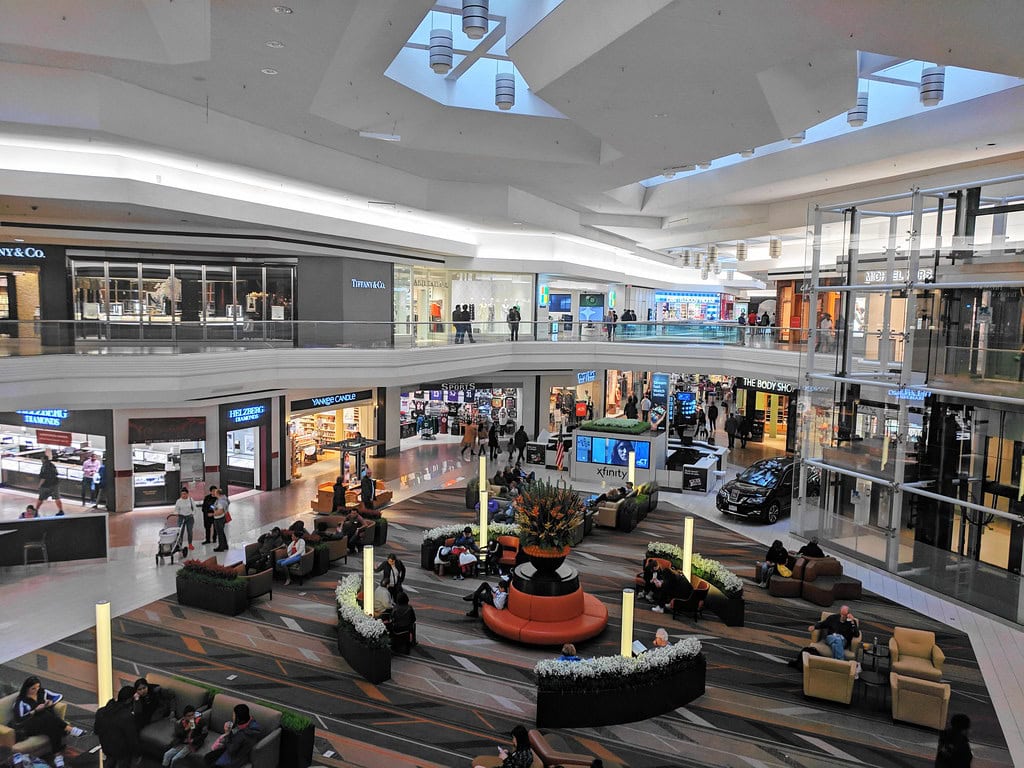
Lord & Taylor arrives, anchors start to shuffle
The mall did not lack for high cultural aspirations.
Three major artworks were commissioned: Buky Schwartz's "Hope" in the North Court, Wen-Ying Tsai's cybernetic, interactive sculpture in the Grand Court, and William Crutchfield's "Alphabet Spire VI" in the South Court, a tribute to the alphabet by a former NASA engineer who had decided that letters were as good an invention as rockets.
For several years, Westfarms could advertise itself as the largest shopping mall in New England, a regional-class center in a landscape of smaller community malls such as Bristol Centre and Farmington Valley.
Its first major expansion arrived in 1983, when a 29-year-old Lord & Taylor in West Hartford relocated into a new 115,000-square-foot, two-level box on the mall's west side.
The ribbon was cut on April 11, and the complex's status as the region's retail gravity well seemed secure.
Only in 1990 did a true rival appear, the Pavilions of Buckland Hills, with more than a million square feet in Manchester.
Inside Westfarms, the anchors began their quiet game of musical chairs. G. Fox was acquired by Filene's in 1992 and rebranded in February 1993.
Sage-Allen filed for Chapter 11 in 1992 and closed the following year; its space was later reborn as a Filene's Men's & Home store in March 1995.
Glow-ups, tech tables, and Tuscan grills
Competition from Buckland Hills forced a more radical response. In March 1995, Taubman launched a $100 million renovation and expansion, a plan that met vocal local opposition and was scaled down but not abandoned.
First came a facelift of the existing mall and remodels of the north and west anchors.
Then, a four-level parking garage was built in 1996, followed by a 32-store Southwest Wing between JCPenney and Lord & Taylor, flanked by two more garages completed in 1997.
Nordstrom, arriving from Seattle with the aura of coastal sophistication, dedicated its Westfarms store on August 1, 1997, and opened on September 6.
It was Nordstrom's first New England location and remained Connecticut's only outpost until 2019.
The project pushed the gross leasable area to around 1,271,000 square feet and coincided with a branding diet: the official name became simply "Westfarms."
The early 2000s continued the shuffle. In 2006, both Filene's locations were folded into Macy's.
A year later, Blue Back Square opened 2.6 miles away in West Hartford Center, an open-air lifestyle center designed to poach some of the very shoppers who had been trained to see Westfarms as their all-weather living room.
Westfarms answered with an $8 million renovation in 2008. Stores moved, facades were refreshed, and a dozen new names arrived, including Aeropostale, Tiffany & Co., Vera Bradley, and Louis Vuitton.
The northeast corner was gutted to make room for P.F. Chang's China Bistro, which opened December 1, 2008, and Brio Tuscan Grill, which followed on May 14, 2009.
Both restaurants, still in place, remain the chains' only Connecticut locations, proof that in this part of New England, orange chicken and faux-Tuscan brick can be surprisingly durable.
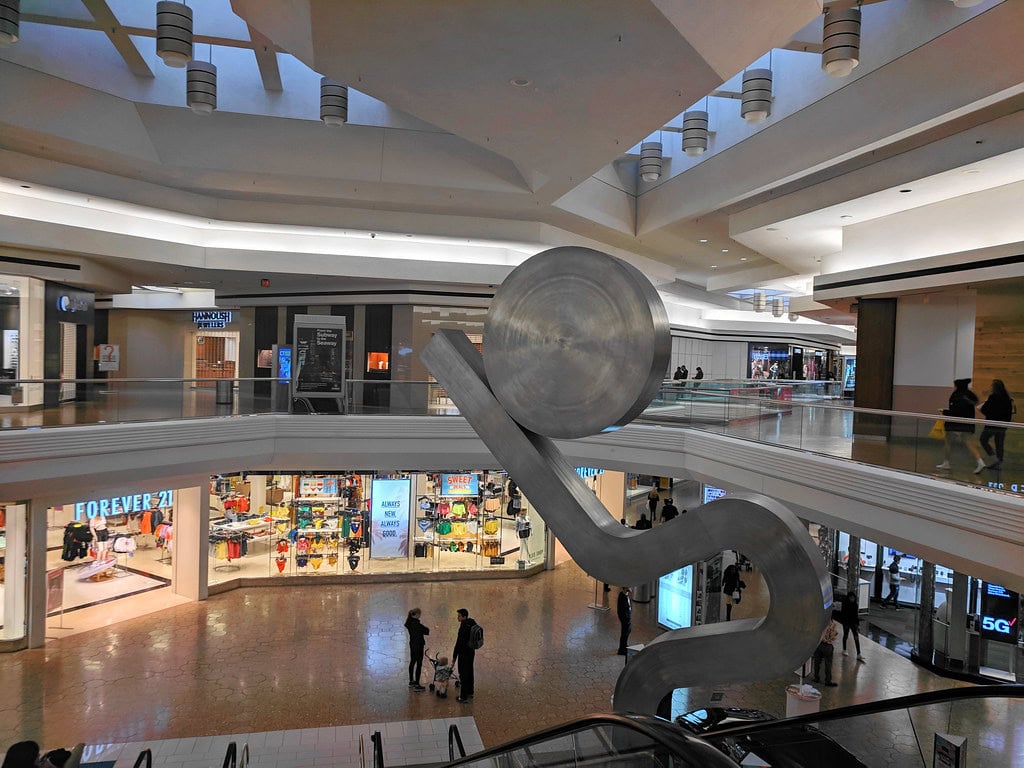
Center Court facelifts and rooftop sunlight
By its 40th anniversary in 2014, the mall that had once been modern was starting to feel old. The answer was a careful remodel of Center Court.
The lowered area was raised to match the rest of the floor. Escalators and a glass elevator were taken out and replaced with a newer double glass elevator.
A "tech table" with charging stations was added, set among better lighting and restrooms.
Five years later, Westfarms tried a new kind of upgrade. In 2019, it began installing 6,824 solar panels on the roof and over the parking lots.
The system, working by early 2020, was supposed to provide almost all the mall's shared electricity, making about 3.2 million kilowatt hours each year, enough to power about 390 homes.
The managers expected to cut the electric bill by 20 percent and used Connecticut's Zero Emission Renewable Energy Credit program to help pay for it.
Inside, Westfarms said it used 41 percent less energy over the past ten years, thanks to changing 95 percent of its lights inside and outside to LED, adding 50 new parking lot lights, swapping out 45 heating and cooling units, and watering more than half its plants with reused rainwater stored in a pond at the south end of the property.
If the American mall was bad for the environment, Westfarms was at least trying to do better.
Ownership shifts, anchors fall, and return
The pandemic brought a stress test in 2020. Taubman Centers merged into Simon Property Group that December, making Westfarms a Simon subsidiary at the precise moment Lord & Taylor went dark nationwide.
The Westfarms store closed on December 29, 2020, subtracting one of the five anchors.
Yet occupancy lingered stubbornly around 90 percent before and during the shutdowns, and new tenants kept arriving once the two-month closure in spring had passed.
In December 2023, the ghost of Lord & Taylor was reincarnated as Jordan's Furniture, 120,000 square feet of theatrical retail, complete with an eight-foot LED tunnel, a 5,000-square-foot entertainment and restaurant zone, an outpost of Sally's Apizza, and an 80-foot-high LED wall stitched from 300 screens showing landscapes and sports.
Arhaus opened an 11,100-square-foot store with a two-story facade facing New Britain Avenue in 2023, while Gong Cha chose Westfarms for its first Connecticut tea shop.
Abercrombie & Fitch, Aerie, and Offline by Aerie all took expanded or refreshed spaces.
Foot-traffic data in 2024 labelled Westfarms one of New England's busiest malls, with about 373,000 visitors in April and roughly 150 stores, nearly all leased.
JD Sports and Miniso joined newer entries like Tempur-Pedic and Squishable.
Outside, the parking lot became a temporary fairground in July 2024, when FL!P Circus parked an 800-seat, air-conditioned big top on the asphalt for a 12-day run.
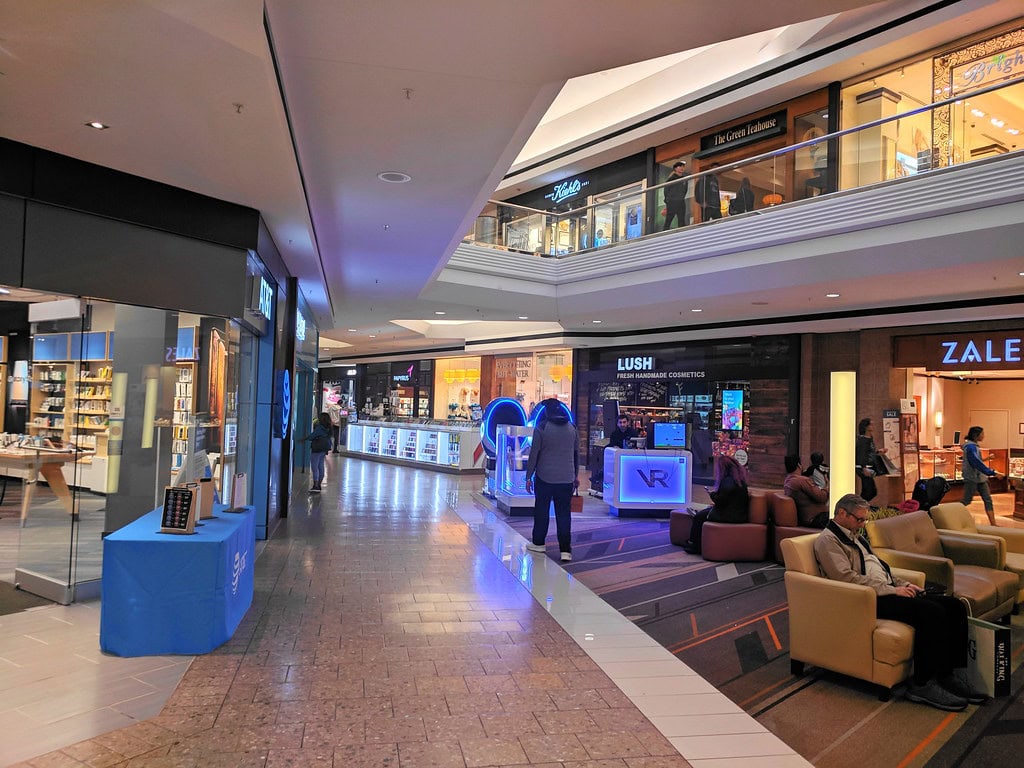
Mall-O-Ween, Santa, and the tenants that leave
For its 50th anniversary in October 2024, Westfarms skipped the usual plaque and instead held a "50 Thank Yous" event, surprising shoppers with fifty $50 gift cards.
On October 27, the mall hosted its fifth annual "Mall-O-Ween," where families in costume strolled the indoor "Boo-levard" and stores handed out candy.
In November, Santa returned to Center Court for "Santa's Flight Academy," featuring a 22-foot enchanted sleigh, fake snow made from crushed rice, and events that lasted until December 24.
These big, festive traditions helped the mall stand out against online shopping.
Not everything went well. In May 2024, a smash-and-grab burglary broke glass and frightened shoppers, but police said no weapons were involved.
Then, in July, Sunglass Hut was robbed at gunpoint, and later, a federal charge was filed against a thief with a Glock who was already on probation and wearing a GPS tracker.
In late March 2025, a planned fight in an upper parking garage led to a 15-year-old girl being accused of stabbing an 18-year-old woman in the leg.
Four people were arrested, and the injuries were not life-threatening.
At the same time, store changes continued as usual. The Hallmark store closed on January 27, 2025, after holding clearance sales.
The Green Teahouse, a mall staple for 16 years, closed its Westfarms location on August 24, 2025, and shifted to online sales.
New stores opened quickly, including Zumiez in the Nordstrom wing, Just Cozy near Center Court, Regal Menswear, a new American Eagle near Nordstrom, Jamba Juice, gorjana jewelry, and a relocated Kilim Design home-decor store.
Finding space in the mall was still a challenge.
Big Y, big numbers, and what's next for the mall
By late 2025, Westfarms has more than 140 tenants, including names like Tiffany & Co., Louis Vuitton, Arhaus, Tory Burch, H&M, and Texas de Brazil.
Its main stores are Nordstrom, two Macy's, JCPenney, and Jordan's Furniture.
Westfarms is Connecticut's third-largest mall, with about 1,267,000 square feet of retail space.
It sits near the intersection of I-84 and Route 9 on Route 71, and is surrounded by open-air shopping centers that often feel like smaller versions of the mall.
The next step for Westfarms focuses more on everyday needs than on luxury.
In October 2025, Big Y Foods announced plans for a 53,000-square-foot supermarket on the south side of the property. The new store, in a separate building, is expected to open in spring 2027.
For a mall known for high-end shopping, adding a grocery store is a smart way to attract regular weekly shoppers.
Westfarms now is a mix of many things: a fashion center, a place for fun, a solar power site, and soon, a supermarket.
Whether this new mix is a fresh start or just a way to keep going depends on how you see malls. What's certain is that, unlike many others, this mall hasn't faded into the past.


